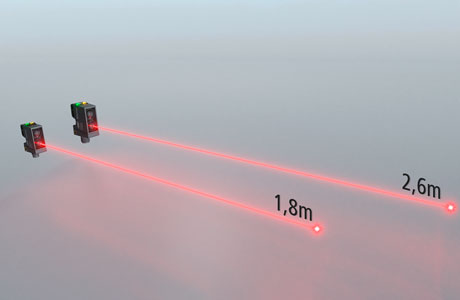Key Takeaway
The output of a photoelectric sensor can be either analog or digital. Analog outputs provide continuous readings, such as 4-20 mA or 0-10V, used when measuring distance or light intensity. Digital outputs offer simple on/off signals and include PNP and NPN transistors, commonly used for detecting the presence or absence of objects.
These outputs are crucial for industrial automation, helping control systems respond to object detection or measurement changes. Proper calibration ensures accurate signal interpretation for optimal performance.
Different Types of Outputs in Photoelectric Sensors
Photoelectric sensors typically have two main types of outputs: NPN and PNP. These terms might sound technical, but they’re pretty simple once you break them down. PNP sensors send current from the sensor to the load, often referred to as sourcing, while NPN sensors pull current from the load to the sensor, also known as sinking.
Then there’s the output type – it can either be digital or analog. In most industrial settings, you’ll find digital outputs because they are easier to interpret. Digital signals only have two states: ON or OFF. This makes it easy for machines to react based on a binary response. However, some applications require more nuanced feedback, and that’s where analog outputs come in. Analog signals provide varying levels of voltage or current depending on the object’s distance from the sensor. Choosing between these outputs depends on the specific needs of your industrial setup.

How to Interpret Output Signals in Industrial Applications
Understanding output signals from photoelectric sensors is critical for seamless industrial operations. When a sensor detects an object, the output switches from ON to OFF or vice versa, depending on its configuration. This change isn’t just about identifying an object; it’s about what action the system takes in response. For instance, in a conveyor system, an OFF signal might stop the machinery to prevent overload, while an ON signal could activate an alarm or secondary process, like opening a gate.
Interpreting these signals correctly helps you automate complex tasks, reducing manual oversight. In automated manufacturing, these output signals are part of a chain reaction, ensuring everything runs smoothly. A misinterpretation could lead to production halts or malfunctions. By accurately understanding what each signal triggers, you can control processes more efficiently, minimizing errors and downtime.
Factors Affecting the Output Response of Photoelectric Sensors
Several environmental factors can influence a sensor’s output, and you must account for these in industrial setups. Dust, dirt, and excessive ambient light can disrupt signal accuracy. Even though most modern sensors are built to withstand harsh conditions, keeping them clean is crucial for precise operations. Failure to maintain sensors may result in false signals, impacting production flow.
Distance is another key factor. If the object is too far from the sensor, the output signal might weaken, especially in analog systems. Temperature fluctuations can also slightly impact output. Choosing sensors with features like adjustable sensitivity and filtering options can help mitigate these issues, ensuring smooth operations even in challenging conditions.
How to Adjust Output for Different Sensor Requirements
Adapting sensor outputs to different industrial tasks is crucial for operational flexibility. Most sensors come with manual adjustment features like sensitivity controls. By fine-tuning the sensor’s range, you can ensure accurate detection, even when working with objects of varying shapes and sizes. This feature is particularly useful in industries where the environment changes frequently, allowing you to maintain consistent detection performance.
Additionally, many sensors allow you to switch between normally open (NO) and normally closed (NC) configurations. NO means the sensor remains off when no object is detected, while NC keeps it on. Understanding how to adjust between these modes enables you to optimize sensor performance based on specific needs, enhancing your system’s flexibility.
Output Signal Troubleshooting and Calibration
Troubleshooting erratic output signals is part of maintaining operational efficiency. When a sensor’s output starts to behave unpredictably, check for obstructions first—dust or debris might be blocking the sensor’s light path. Cleaning the sensor often resolves these issues, but if the problem persists, inspect the wiring to ensure proper connectivity.
Calibration is another key step to maintaining accurate output signals. Many sensors have auto-calibration features, but some might require manual adjustments. Following the manufacturer’s guidelines for recalibration is essential to maintaining signal accuracy. Regular calibration ensures your sensors are delivering the precise signals needed for optimal performance, reducing the risk of downtime.
Conclusion
Mastering the output of a photoelectric sensor is crucial for ensuring that your industrial systems run smoothly and efficiently. By understanding the types of outputs, knowing how to interpret signals, and regularly adjusting and troubleshooting as needed, you’ll be well-equipped to optimize your processes. Photoelectric sensors are incredibly versatile tools, but their true potential is unlocked when their outputs are correctly utilized. Keeping these factors in mind will allow you to harness their full power for improved automation and operational success.
